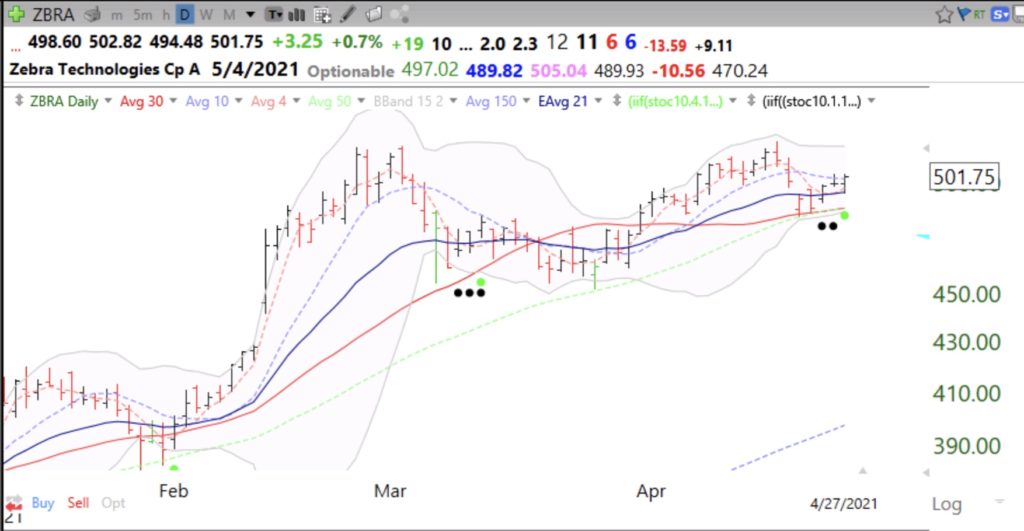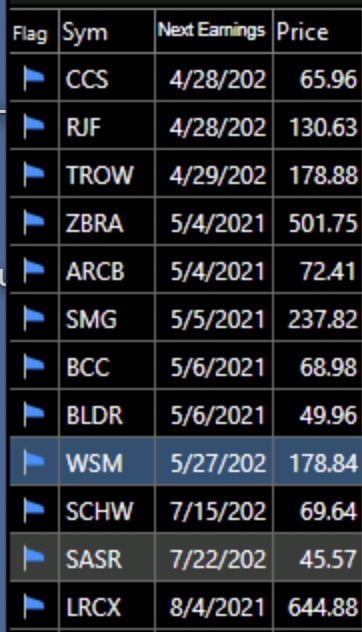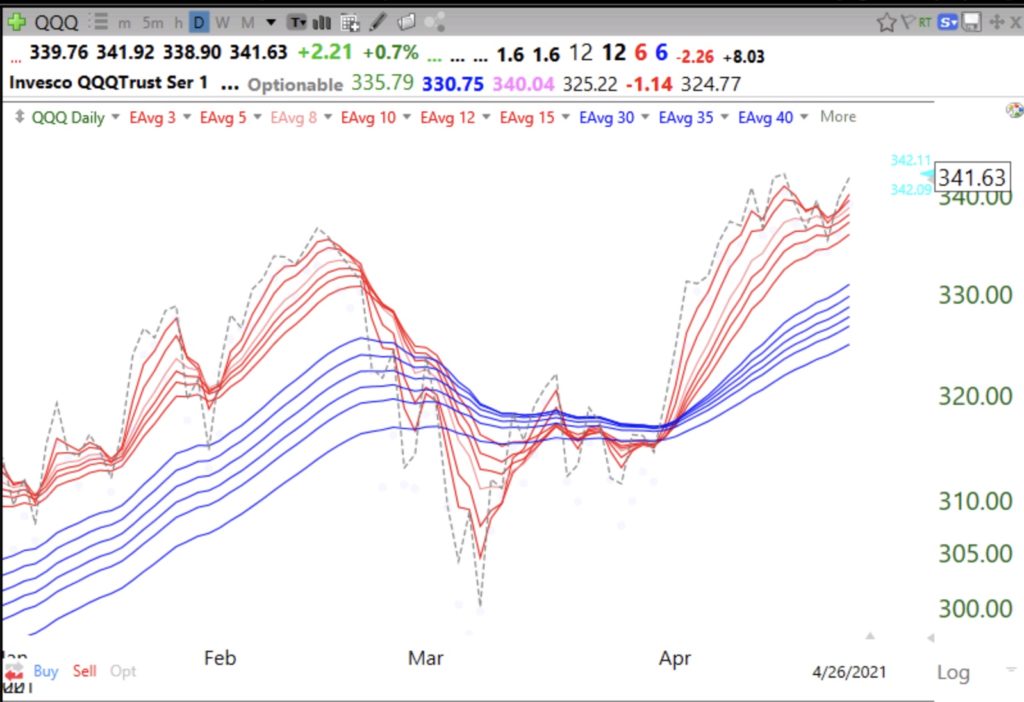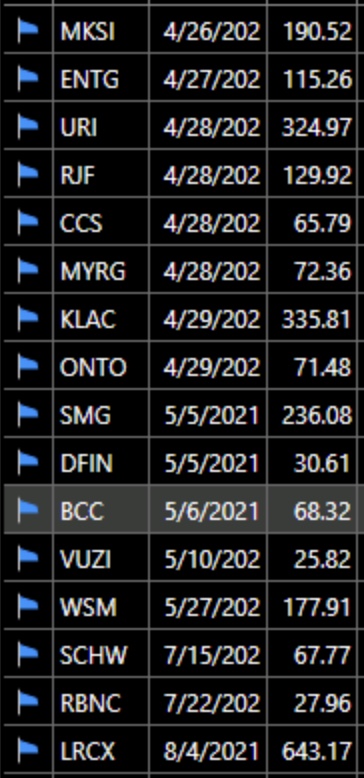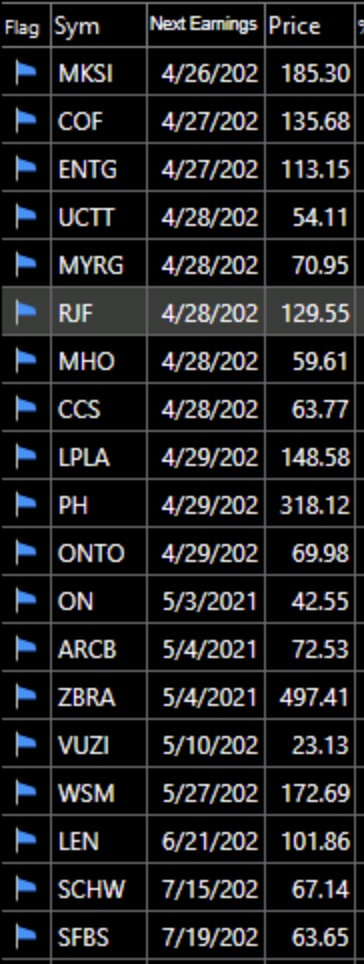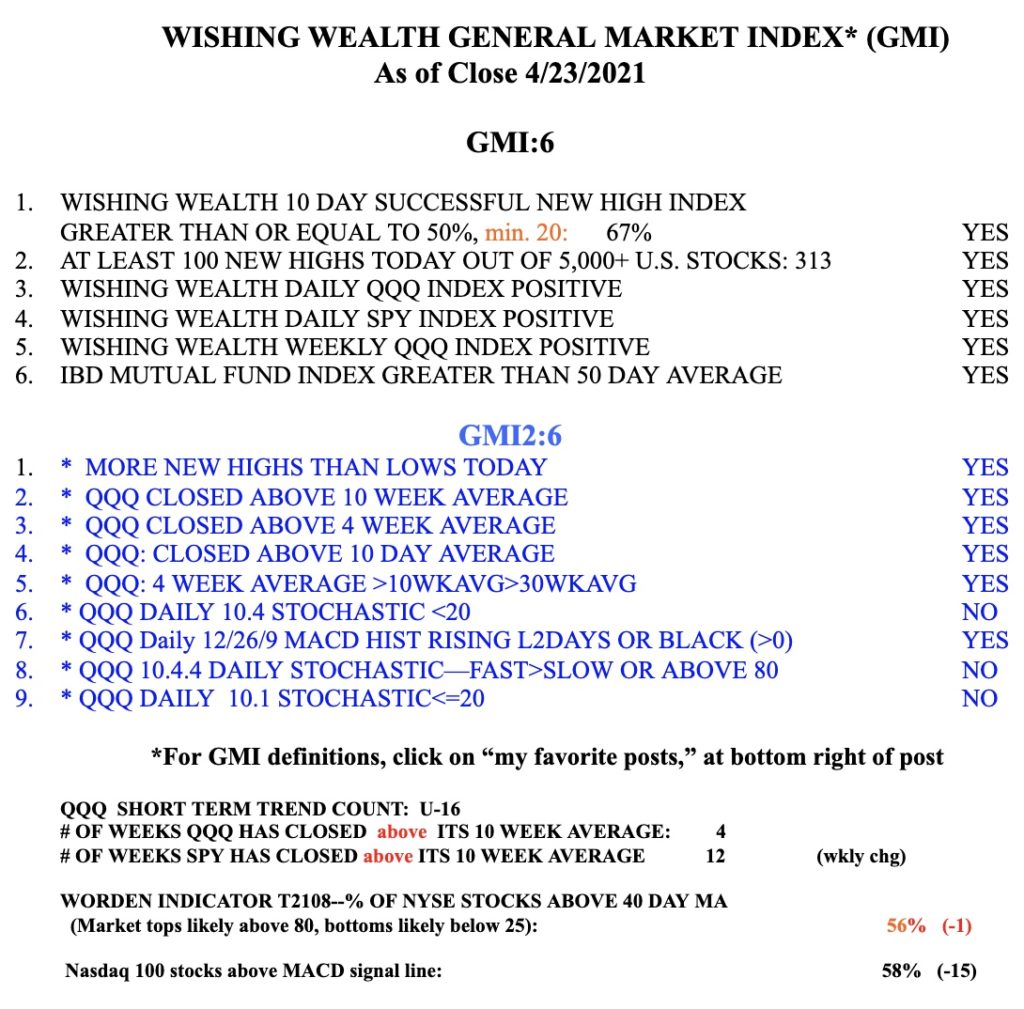Note black and green dot signals.
Blog post: 16th day of $QQQ short term up-trend; GMI remains 6 (of 6) and Green; 19 stocks from Wish-Darvas scan
These stocks came up in my Wish-Darvas scan as of Friday’s close. See prior posts for scan criteria. I have not looked at all but post for your own analysis. Sorted by expected earnings date. They are technically strong stocks near yearly highs that have bounced from over-sold conditions. If bounce fails, I sell immediately.
